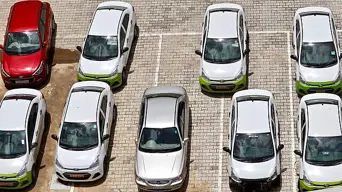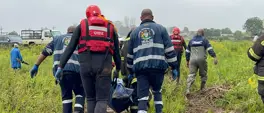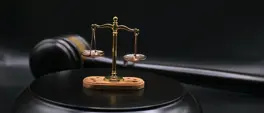Tips to make your e-hailing holiday ride safer - from a legal expert
Vicky Stark
24 November 2025 | 16:18'What you have to bear in mind is that you are essentially getting in a vehicle often times alone with someone who is a stranger to you so you need to be vigilant,' says Kirstie Haslam of DSC Attorneys

Unfortunately, crime associated with e-hailing services is on the rise and one does need to think about what happens when you are a passenger and something goes wrong.
Speaking to CapeTalk's Pippa Hudson, Kirstie Haslam of DSC Attorneys said that sadly there's been a number of fatal attacks on drivers, especially in Gauteng where 13 people linked to e-hailing were killed in two weeks.
She also cited reports that 72% of all e-hailing drivers had received threats from traditional taxi operators.
Hudson said a lot of people had a fake sense of security getting into these vehicles.
"You tend to switch off, not concentrate very well. If you're like me you're on your phone catching up on emails quickly. It's very easy to lose focus and to lose your sense of where you are and where you're going and who is around you, near to the car - when you're travelling as a passenger. Is that part of the problem that we switch off too quickly?"
"Yes," replied Haslam. "What you have to bear in mind is that you are essentially getting in a vehicle often times alone with someone who is a stranger to you, so you need to be vigilant and make sure that the vehicle appears to be in good order. It matches the vehicle described on whatever app or platform you're using and to be aware of your surroundings at all times. And, of course, this becomes more of a problem when it's late at night or you've had one too many which is after all when people often use these services. So, you need to remain responsible for your own safety."
Hudson said that a lot of us get that you have to be vigilant before we get in, we check the registration, we check there's no-one else in the car but there's a risk of somebody else on the road doing something.
"You may be involved in an accident, especially at this time of year when there are more drunk and tired drivers. If you are what should you as a passenger do in the immediate aftermath?" asked Hudson.
Haslam's advice: "Check yourself and others for injuries, call emergency services promptly, also when you have the chance to do so, as soon as possible make sure that that incident is logged through whichever app that you are using. If it's not an available feature on the app itself then make sure that you report it to whoever renders the service.
"Take photos of the scene. These are invaluable if you are in a position to do so.
"And, of course, in the case of e-hailing, make sure you've got the driver's identification, licence number and the registration number of the vehicle."
Should you only do this when someone is injured?
"I would definitely always say that as a precautionary measure, too much information is better than not enough so take that information regardless," said Haslam as it can be used to establish liability.
"If the platform driver is himself responsible for causing an accident and you are injured then your recourse would be against the Road Accident Fund because the Road Accident Fund indemnifies any driver for negligent driving which causes injury. If another vehicle has caused the accident then the same applies.
"Any claim would lie against the Road Accident Fund but you need that information upfront so that there's not going to be any issue about establishing who is liable if you do have a civil claim to pursue."
Are there any circumstances in which the RAF wouldn't entertain a claim for an accident that happened to you as a passenger in an Uber or a Bolt for example?
"If it was caused by something that was unrelated to negligent driving on the part of one or the other driver. Say for example a pedestrian rushes out in front of the vehicle that you're travelling in and an accident ensues and there was absolutely nothing that the driver could do to avoid an accident and that the pedestrian was totally to blame then you would have no recourse against either the platform itself or the Road Accident Fund.
"You could possibly have recourse against the pedestrian. Depending if that pedestrian can be identified and is worthwhile pursuing in terms of your chances of recovering damages from them."
Accidents are not the only thing that happen, unfortunately incidents of violence are something one needs to be aware of as well. What legal recourse does an e-hailing passenger have if something like that happens?
"Well that would very much depend on the circumstances of the incident. Let's say for example a platform driver had taken a route where there's been huge reports of known violence and the likelihood of harm is high and something then ensues. It might be a prospect to actually pursue the platform and/or the driver themselves for putting you in that position and failing in their duty of care towards you so you might be able to recover damages, should damages ensue," said Haslam.
And in the case of a criminal assault or a robber?
"Make sure you are safe, report the incident to police and the e-hailing platform. Save the communication you have... You need the case number."
Here are some more tips from Haslam to reduce the chance of issues:
- • Recognise that it's the festive season and don't get so inebriated that you lose the ability to judge what is happening around you.
- • Share your trip location with friends and family so they can monitor your route.
- • Make sure you are in the correct car with the correct driver.
- • Don't get picked up in isolated areas.
- • Don't reveal your personal details once you are in the vehicle.
- • Trust your instincts if something doesn't feel right, you rather terminate the trip or that particular driver and you can deal with the cancelation fee and any argument around that afterwards.
To listen to Kirstie Haslam of DSC Attorneys' full conversation with CapeTalk's Pippa Hudson click the link below:
Get the whole picture 💡
Take a look at the topic timeline for all related articles.
















